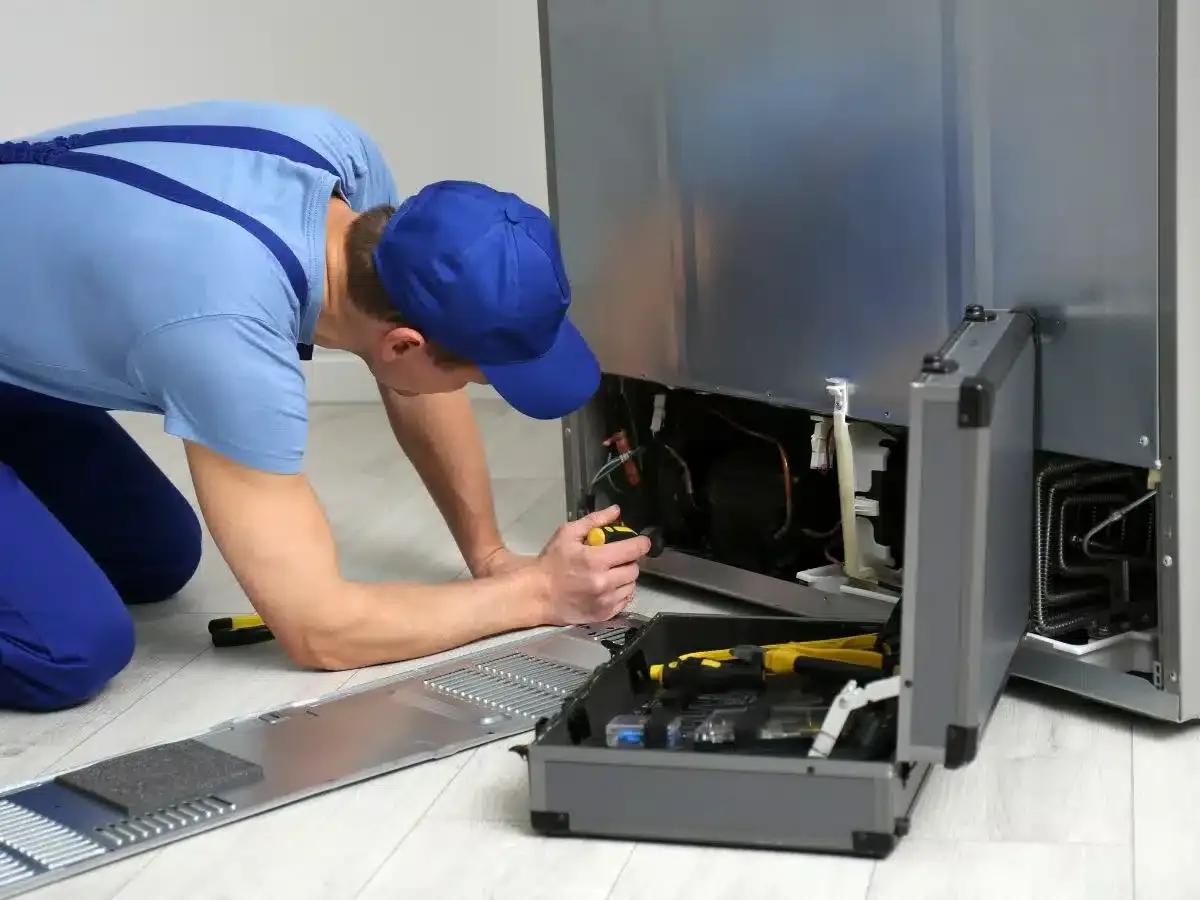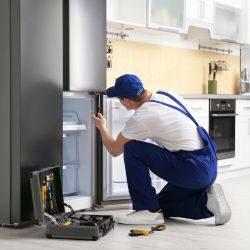
A leaking fridge is an irritating problem that can quickly damage your kitchen. Frigidaire refrigerators are generally reliable, but like any appliance, they can develop issues. If your Frigidaire is leaving mysterious puddles around the base, don’t panic! Let’s track down the source of the leak and find quick solutions.
Frigidaire Fridge Leaking: Troubleshooting Tips
Find the leak
- Check for Puddles or Drips: Find the source of the water. Is it pooling inside the refrigerator, under the unit, or behind it? The location of the leak can help narrow down possible causes.
- Examine the Water Supply Line: If the water is behind the refrigerator, you’ll need to carefully pull it away from the wall. Trace the water supply line to check for any obvious signs of damage, loose connections, or cracks in the line itself.
Common Causes of Leaks
There are a few common culprits when it comes to a leaking refrigerator:
- Clogged or Frozen Defrost Drain: Many fridges have a defrost drain to manage condensation and melted ice. This drain can become clogged with food debris or frozen over, leading to leaks.
- Damaged Water Inlet Valve: The water inlet valve controls the flow of water from your home’s supply to the refrigerator’s ice maker and water dispenser. A faulty valve can leak, often behind the fridge.
- Faulty Door Gasket: The rubber gasket around your fridge doors keeps cool air in and warm air out. A damaged, warped, or torn gasket can cause condensation and leaks.
- Ice Buildup in the Freezer: Excess ice buildup can block airflow and ventilation, sometimes causing water to leak and pool.
- Cracked Drain Pan: The drain pan catches condensation and defrost water, usually located at the bottom of your fridge. A cracked pan will leak water onto your floor.
Solutions for Common Leaks
Let’s explore solutions for these common leakage issues:
- Clearing the Defrost Drain: Locate the defrost drain inside your freezer (consult your manual for its location). Clear away ice or debris with a blunt object or warm water. Never use sharp tools!
- Replacing the Water Inlet Valve: Turn off the water supply to the fridge. Locate the valve (usually behind the refrigerator) and follow manufacturer instructions to replace it. A plumber may be needed for this task.
- Repairing or Replacing the Door Gasket: Inspect the gasket for cracks or tears. Small tears may be patched with a sealant. Severe damage requires replacing the gasket.
- Defrosting the Freezer: If there’s an excess of ice, empty your freezer, unplug it, and allow it to completely defrost. This helps ensure proper airflow and prevents future issues.
- Fixing a Cracked Drain Pan: A cracked pan usually requires replacement. Since this involves removing the bottom of the fridge and accessing the pan, it may be best to call a professional technician.
Preventative Maintenance Tips
Stop leaks before they start with these simple tips:
- Clean the condenser coils: Dusty coils affect airflow and create more condensation. Clean the condenser coils (located at the back or the bottom of your fridge) with a vacuum or brush at least twice a year.
- Check the gasket regularly: Maintain the seal on your fridge door by regularly inspecting the gasket for signs of stress. Clean the gasket with soapy water to prevent food buildup.
- Keep the freezer organized: Avoid overpacking your freezer as this restricts airflow and can lead to ice buildup.
When to Call a Professional
Sometimes DIY repairs aren’t enough. It’s best to call an appliance repair technician if:
- You cannot identify the source of the leak.
- The leak persists after trying these troubleshooting tips.
- Repairs require accessing electrical or gas components.
- Your refrigerator is still under warranty.
